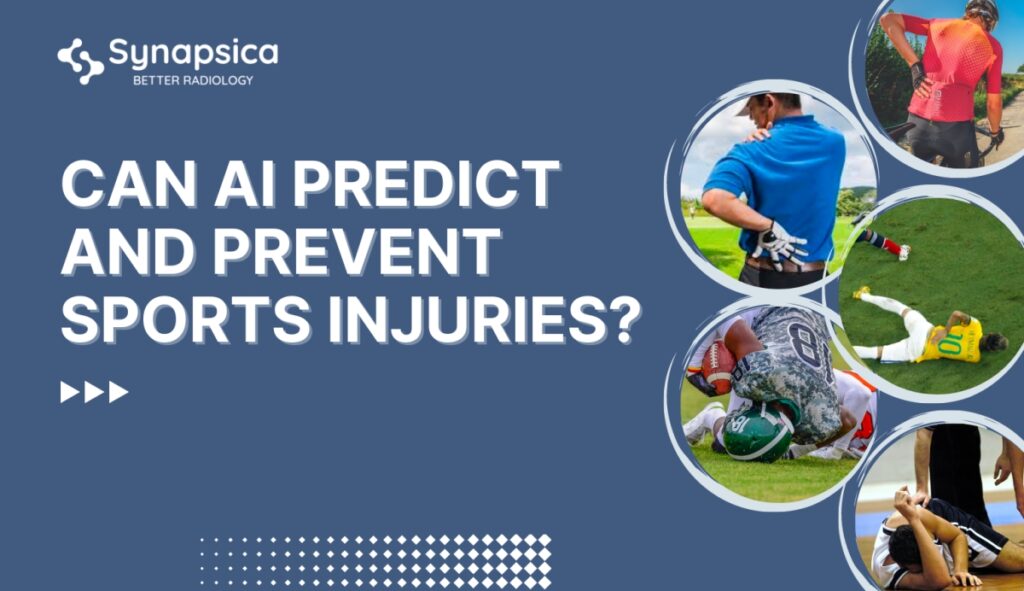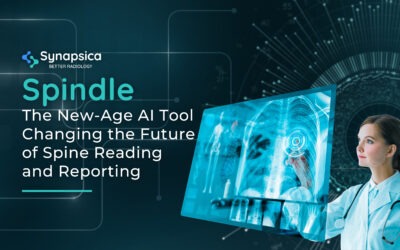
Slam Dunk!! Goal!! Or what a catch!! We all love those extraordinary leaps, bounces, flips and stretches that win us a sports match. Have we ever stopped to wonder if these wins come at the high cost of sports injuries?
Sports players train day and night relentlessly to prepare and give their best performance for every match. However, during the course of their practice, matches or even daily life, injuries, ligament tears or muscle sprains are pretty common. If left unattended, these injuries can turn into a life or career-threatening mistake for players which we wish to avoid.
1. Introduction
2. Use of AI in treating sports-related spine injuries
2.1. AI-powered diagnosis
2.2. Predictive analytics
2.3. Rehabilitation and recovery
2.4. Virtual rehabilitation
2.5. Personalized treatment plans
2.6. Injury prevention
3. Conclusion
1. Introduction
Sports teams spend millions of dollars on their players’ health and fitness and any injuries can be detrimental to their players’ careers. Artificial intelligence (AI) has the potential to significantly change the way that sports spine injuries are diagnosed, treated, and managed. Tools such as Spindle and SpindleX are making it easy to prevent long-term injuries or spinal issues by detecting even the minutest variations in time. However, AI has just begun its foray into the field of healthcare and more importantly radiology or spine imaging.
With AI-related radiology imaging, it is becoming easier to prevent and cure injuries we didn’t even know existed. AI-assisted reports are helping physicians and surgeons take better and more accurate decisions and treatment plans, saving millions of dollars in the healthcare industry. Here are a few examples of how AI is improving the treatment of sports-related spine injuries:
2.1. AI-powered diagnosis
AI algorithms have rapidly transformed to analyze medical images, such as Stress X-rays, MRI scans, and CT scans, to help diagnose sports-related spine injuries. By analyzing large amounts of data, AI algorithms can identify spinal dimensions, patterns and biomarkers that might be missed by a human radiologist, leading to more accurate diagnoses.
2.2. Predictive analytics
AI algorithms can analyze data from previous sports spine injuries and other medical histories to predict the likelihood of a particular injury occurring. This information can be used to develop prevention strategies and optimize treatment plans for prolonged fitness.
2.3. Rehabilitation and recovery
AI algorithms can be used to develop personalized rehabilitation and recovery plans for athletes who have suffered sports spine injuries. By analyzing data from a variety of sources, such as wearable sensors, medical records, and performance metrics, AI algorithms can identify the most effective treatment strategies and monitor progress over time.
2.4. Virtual rehabilitation
AI can be used to develop virtual reality (VR) rehabilitation programs that allow athletes to practice rehab exercises in a simulated environment. VR rehab programs can be customized to the individual athlete’s needs and can provide a more engaging and interactive experience than traditional rehab methods.
2.5. Personalized treatment plans
AI algorithms can analyze a person’s medical history, genetic data, and other factors to create personalized treatment plans that are tailored to their specific needs. This could help to reduce the risk of re-injury and improve recovery times.
2.6. Injury prevention
AI can be used to analyze data on sports injuries, including how they occur and what factors contribute to their likelihood. This information could be used to design more effective injury prevention programs and training regimens for athletes.
Using effective radiology imaging AI tools such as Spindle or SpindleX, medical professionals and doctors can constantly measure any changes in spinal dimensions or check for any ruptures in ligaments and muscle tissue surrounding the spine for wear and tear to prevent any major injury from occurring.
3. Conclusion
Overall, AI has the potential to revolutionize the way that sports spine injuries are diagnosed, treated, and managed. By providing more accurate diagnoses, predicting the likelihood of future injuries, developing personalized treatment plans, and utilizing VR for rehabilitation, AI can help athletes recover faster and more effectively from sports spine injuries.
Do you have more questions on how you can help manage your injuries or your patients’ injuries better with the help of AI? Let’s talk AI.





